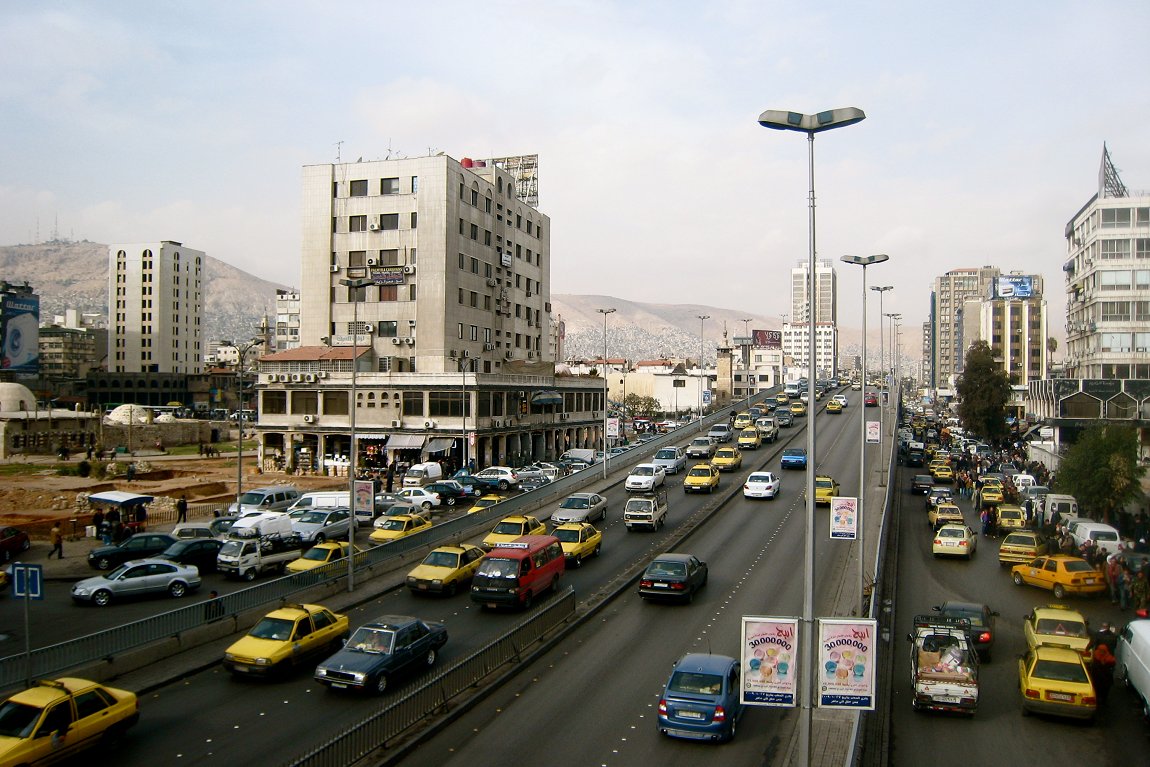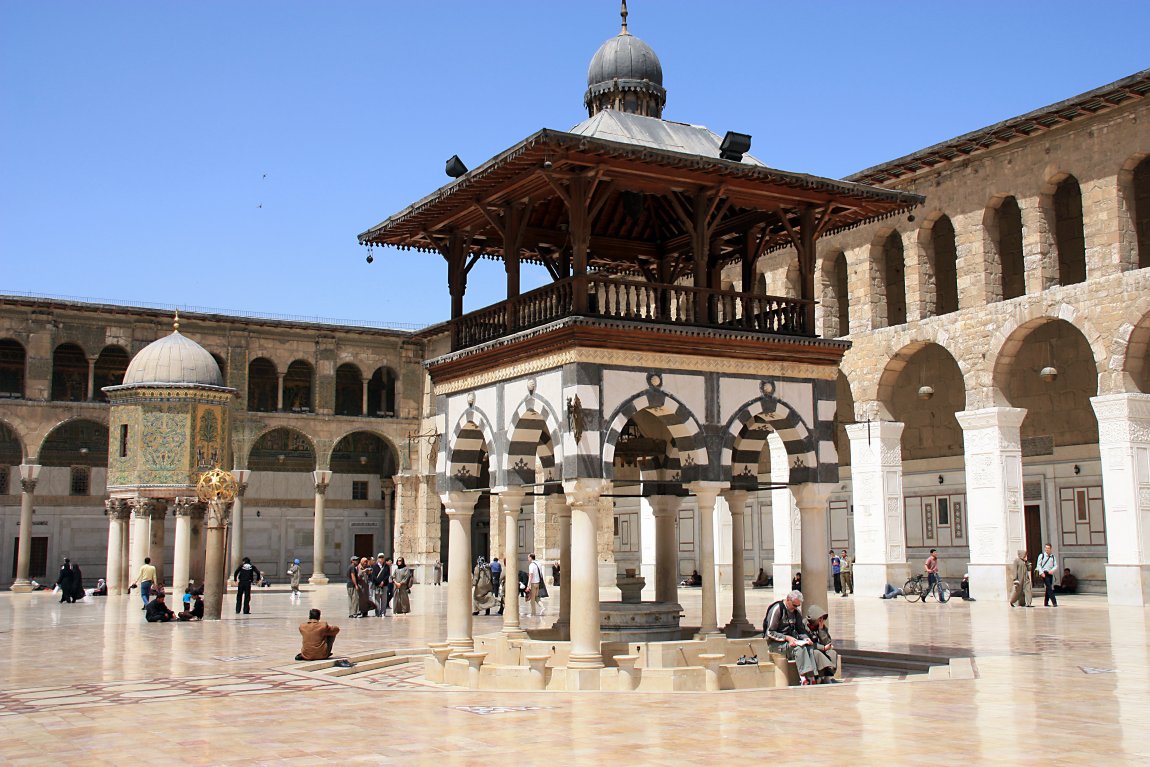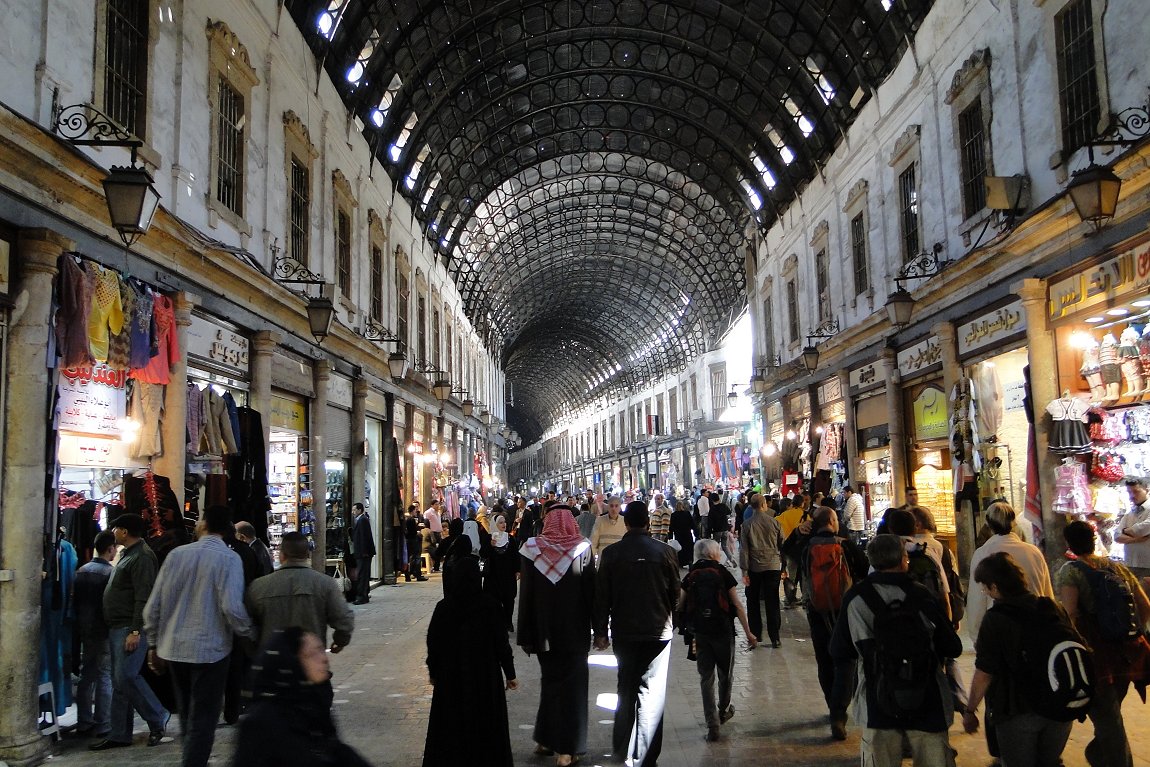 View of downtown Damascus, Syria
View of downtown Damascus, SyriaSource: https://commons.wikimedia.org/wiki/File:Damascus2009.JPG
Author: Ankara

Author: Ankara

Damascus (Arabic: دمشق) is the capital and second biggest city in Syria. Also known as Al Sham in Syria, the city is one of the 14 governorates of the country. It covers 105 sq km (40.5 sq mi) and has a population of 1.7 million people (2011 estimate).
Damascus is in the Eastern European Time zone, which is two hours ahead of Coordinated Universal Time (UTC+2) and three hours ahead during Daylight Saving Time in summer. The phone IDD area code is +963-11.
Damascus is not directly on the Mediterranean coast, but 80 km (50 mi) inland, on a plateau some 680 m (2,230 ft) above sea level. It is sited on the Ghouta oasis surrounded by the desert. However with rapid growth and development of Damascus, the Ghouta oasis has been shrinking in size and at the same time, becoming polluted.
Damascus experiences a hot semi-arid climate. Due to the rain shadow effect of the Anti-Lebanon mountains, it only receives 220 mm (8.66 in) of rain throughout the year, with no rainfall at all from June to August. These coincide with the hottest months in Damascus, with average temperatures rising to 37°C (99°F) in August. Coldest month is January, when the temperature drops to 2°C (36°F). It is also the wettest month, albeit with just 43 mm (1.69 in) of precipitation.
 Umayyad Mosque, Damascus
Umayyad Mosque, DamascusSource: https://commons.wikimedia.org/wiki/File:Umayyaden-Moschee_Damaskus.jpg
Author: Ulrich Waack

Author: Ulrich Waack

Damascus is an ancient city with one of the longest record of continuous habitation. Carbon-14 dating has suggested that the area around Damascus has been occupied since 6300 BC. The city has seen many kings and kingdoms come and go. The city was mentioned in Genesis 14:15 of the Holy Bible, suggesting that it already existed when the book was written.
The earliest documented evidence of Damascus came from the 1st millennium BC, when the formerly nomadic Aramaean people migrated from Mesopotamia and settled in the Damascus area. Evidence of their having discarded a nomadic lifestyle comes from remains of canals and tunnels that they built, probably to irrigate their fields.
Damascus was conquered by Alexander the Great in 323 BC. After that, it went through a turbulent period, where control over the city passed between the Seleucid and Ptolemaic empires. Much of western Syria including Damascus fell under Roman rule in 64 BC. The city appeared in the New Testament of the Holy Bible, when Paul (then Saul) received a vision of Jesus, on his way to persecute early disciples of Jesus who were in Damascus.
Between the 2nd century and AD 222, Damascus was an emporium of goods coming on the caravan trails from southern Arabia, Petra, Palmyra and on the Silk Road from China. So important was the city that the Romans under Emperor Septimius Severus elevated it to colonia.
 Souq al-Hamidiyah, Damascus
Souq al-Hamidiyah, DamascusSource: https://commons.wikimedia.org/wiki/File:Al-Hamidiyah_Souq_02.jpg
Author: Bernard Gagnon

Author: Bernard Gagnon

Damascus fell into the hands of Arab conquerors in AD 635, when it was captured by Muslim-Arab general Khalid ibn al-Walid. The victory of the Arabs increased the Muslim population of Damascus, which until then was predominantly Eastern Orthodox and Monophysite. The Grand Mosque of Damascus, also known as the Umayyad Mosque, was constructed in AD 706 over the site that was formerly the Cathedral of St John.
From the 11th to the 16th century, Damascus was ruled by various Muslim dynasties including the Seljuq Turks, the Ayyubid and the Mamluk. In between, it was invaded by the Mongols in 1260 and by the Turco-Mongol under their leader Timur in 1400.
Damascus came under the rule of the Ottoman Turks in 1516. Ottoman rule over the city was to last until the early 20th century, with only a brief period from 1832 to 1840 when it was under Ibrahim Pasha of Egypt. The Ottoman rule in Damascus came to an end when the Turkish troops were ousted in 1918, and Faisal ibn Hussein proclaimed King of Syria.
In 1920 the French was granted a mandate over Syria, and they made Damascus its capital. The city remains the capital of Syria when the country attained its full independence in 1946. Today some 85% of the people of Damascus are Sunni Muslims, although there is still a small Christian minority, constituting some 10% of the population. And even smaller Jewish community exists, living in Haret al-Yahud, the Jewish quarter.
Visiting Damascus
The Damascus International Airport (DAM) is the busiest airport in Syria. It receives flights from major cities in the Middle East, as well as from London Heathrow, Paris CDG, Rome and Vienna, among others. There are buses connecting the airport to downtown Damascus. The fare is 45 Syrian pounds per person, and 25 Syrian pounds for the luggage. Taking the taxi will cost you 500 Syrian pounds for the same journey.Exploring Damascus
The most interesting sights in Damascaus are in the Old City. This is best explored on foot. The New City, in comparison, is not so pedestrian friendly. To go from place to place, the public transport is provided by the mini buses called servees. The fare anywhere within the city limits is usually 10 Syrian pounds.Places of Interest in Damascus
- Azzam Palace
- Mausoleum of Saladin
- Mount Qasioun
- October War Panorama
- Souq al-Hamidiyah
- Umayyad Mosque
 Latest updates on Penang Travel Tips
Latest updates on Penang Travel Tips
 Map of Roads in Penang
Map of Roads in Penang
Looking for information on Penang? Use this Map of Roads in Penang to zoom in on information about Penang, brought to you road by road.
Copyright © 2003-2025 Timothy Tye. All Rights Reserved.

 Go Back
Go Back